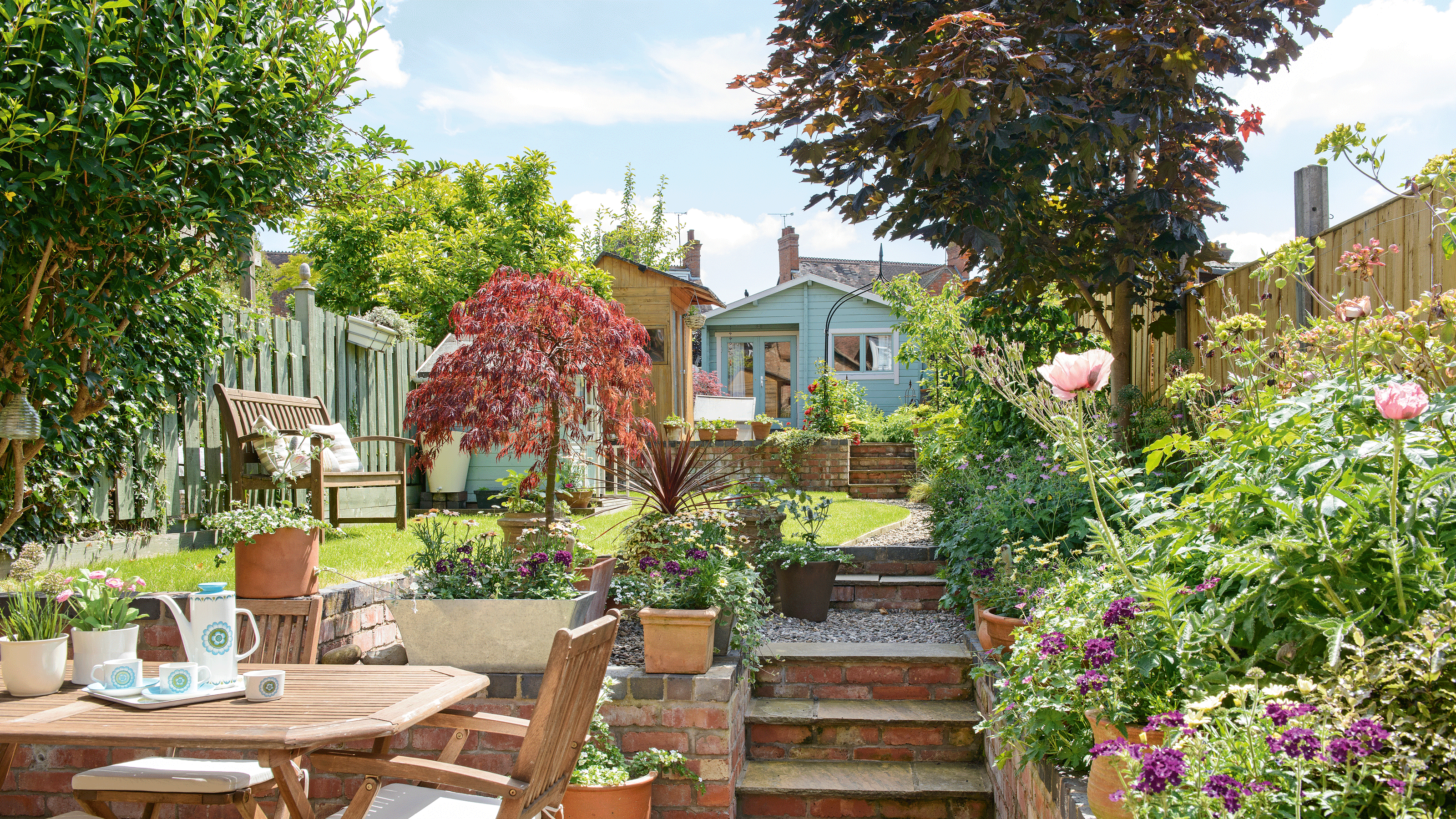What can I do if my neighbour's tree is damaging my fence? Everything you need to know from a legal standpoint
The exact steps to take, according to the experts


For those of us who share a garden fence with a neighbour, you'll already be familiar with the tricky legalities and neighbourhood politics of sharing a boundary. But what happens when a neighbour's tree is damaging your fence?
This damage can span from issues with roots, a leaning trunk or overhanging branches, and if the damage is causing recurring issues for a fence you're responsible for, it can be tricky to know what to do. I spoke to experts to find out exactly where you stand and what to do if you find yourself in such a situation.
From who is responsible, to whether or not you can trim back overhanging branches and cut your neighbour’s tree, here’s everything you need to know from a legal standpoint.
What steps should be taken if a neighbour’s tree is damaging your fence?
First and foremost, it’s important to establish who owns the fence, as this isn’t always as clear or obvious as it may seem. When it comes to how you know which fence is yours, this can be done by checking property deeds or land registry plans. In most cases, you can access these online if you don’t have a copy, but you may need to consult a surveyor if it’s unclear.
If you own the fence and the tree is on their property, you’ll want to take clear photographs of the tree and any damage that it has caused, as well as ‘any encroachment, such as roots or branches,’ says Jack Malnick, MD of Sell House Fast.
‘Note the date and progressive impact, if it's a recurring issue. And keep a written record of observations, including weather conditions if relevant, like if a storm has caused tree branches to fall.’
It’s just as imperative to ‘take a calm and measured approach,’ advises Michael Clark, a Property Litigation Partner at Knights. ‘Disputes over relatively minor damage, such as a fence, can easily escalate and harm your relationship with your neighbour, potentially leading to more serious issues down the line.’
Sign up to our newsletter for style inspiration, real homes, project and garden advice and shopping know-how
If you can, it’s best to be on good terms with your neighbours, both in terms of fostering a sense of community as well as for security purposes. It’s always handy to have someone keep an eye on your property when you’re on holiday, for example.

‘Start by having a polite, face-to-face conversation with your neighbour to raise the issue and ask if they’d be willing to resolve it. If the damage is minor and they don’t offer to cover the repair costs, it may be less stressful and more practical to take care of the repairs yourself,’ Michael continues.
‘That said, if you feel strongly about the damage and your neighbour refuses to cooperate, you can make a claim through the Small Claims Court to recover costs. However, be aware that this route can take a significant amount of your time and energy and become emotionally draining, so consider carefully whether it’s truly worth pursuing.’
Depending on your home insurance, you may have legal expenses cover, and ‘if you do, contact your insurer as soon as possible, and they’ll be able to refer you to a solicitor on their approved panel,’ Michael adds. Essentially, 'it is advisable to avoid any kind of court proceedings when it comes to a neighbour dispute. Invariably, such proceedings will be time-consuming, stressful and expensive. A negotiated settlement, either direct or via solicitors, is always the best outcome. That can be done either by correspondence or via formal mediation.’
What is the law surrounding trees and boundaries?
According to Dean Meadows, Principal Arboriculturist and Tree Risk Management Lead at Arbtech, ‘in almost all cases, a tree is the responsibility of the owner of the land on which the tree grows.’ So, if you happen to have a tree which could cause damage to a neighbour’s property, you’ll also need to ensure that it isn’t at risk of doing so.
Yet, when a tree lies directly on the boundary line between the two properties, it is in turn owned jointly by each neighbour. Because of this, if you plan on undertaking any work on a jointly-owned tree, you will need consent from your neighbour before you get started. It is important to do this as ‘if one owner cuts down or undertakes work on the tree without permission from the other, they would be held liable,’ warns LBS Horticulture’s Horticulture Expert, Graham Smith MCIHort.

What are my rights if a neighbour's tree overhangs my garden?
‘If the tree trunk is wholly sat on the neighbour's land and the branches are overhanging onto your land, you only have a right to trim back the branches up to the boundary line, not beyond it – you can't reach into the neighbour's garden and cut them back,’ explains Jagdeep Sandher, Partner and Head of Civil Litigation at Blythe Liggins Solicitors.
You don’t need your neighbour’s permission to do this, but it’s generally polite to inform them. Even though it’s likely that your neighbour won’t want the cuttings that you’ve taken, they actually remain the neighbour’s property, even after they’ve encroached into your garden or outdoor space. They ‘must be offered back or disposed of with their consent. And you must not damage the tree or trespass on their property in the process,’ Jack adds.
‘Do not throw them back over the fence which some believe is the right thing to do. It is not the law and will no doubt antagonise your neighbours,’ says Nicola Davies, Partner in the property litigation team at Paris Smith solicitors.

You will also need to double check that the tree in question doesn’t have a Tree Preservation Order (TPO) in place or might be part of a conservation area, before you start cutting it back. Many councils have a map on their website showing the location of all the TPOs in your local area, which can be a great resource.
Just bear in mind that ‘carrying out unauthorised work on a TPO-protected tree can result in fines of up to £20,000 per offence,’ Nicola cautions.
‘There is an exception if part of the tree is dead, dying or poses an immediate danger to people or property, you may carry out the work without permission. However, even in this scenario, you should still give the council at least 5 working days’ notice, unless it is an emergency and always be prepared with evidence to justify the exception.’
Who can I speak to for help?
If you are on good terms with your neighbour, they should be your first point of contact, with many issues being fixed this way.
‘If you are unable to informally resolve any disputes around trees and boundaries with your neighbour, you can seek the help of a mediator,’ Graham proposes. ‘You can also speak to your local council, but they will not take action unless you have attempted to informally resolve the dispute before going to them.’
FAQs
Who pays if a neighbour's tree damages my property?
In the unfortunate situation that your neighbour’s tree causes damage to your fence or property, ‘if your neighbour is found negligent, they could be held legally liable,’ Dean establishes. ‘Tree owners have a legal duty to ensure that trees growing on their property are reasonably safe and do not pose a foreseeable risk to others’ Therefore, trees that are unsafe through damage or disease may make them liable if it causes any damage to a property or person.
‘In scenarios where a healthy tree has caused damage due to unforeseeable circumstances, your neighbour may not be liable, and in this case, you may need to claim on your home insurance,’ Dean concludes.
Is there a height limit for neighbour's trees?
The experts all agree that, unfortunately, there aren’t currently any height restrictions for trees growing on a neighbour's property here in the UK. ‘If the issue is with a hedge, however, and not a single tree, height rules may apply,’ Dean offers.
‘A hedge is defined as a line of two or more trees or shrubs, and a ‘high hedge’ would be classed as anything over 2 metres tall. In this scenario, talk to your neighbour first and try to reach a resolution, but if unsuccessful, you can make a formal complaint to your local council under the High Hedges legislation.’
If you've ever experienced a neighbours tree damaging your fence, how did you go about resolving it and what would your advice be?

Ellis Cochrane has been a Freelance Contributor for Ideal Home since 2023. Ellis has been writing about homes, interiors and gardens for four years now, with her also contributing to House Beautiful, Country Living, Expert Reviews, Real Homes and Stylist.